I recently wrapped up a session with a new client that came to me with a history of extensive back and hip pain. Throughout our hour together they were able to successfully reactivate specific muscular systems that allowed them to walk out of my office without any of the pain or dysfunction that they originally came in with. As they walked out, I pondered some of the lingering questions that I have had for the past 10 years. How can both chronic, acute pain and tension be eliminated so quickly? How is this phenomenon of eliminating pain and dysfunction without manipulation or touch, even possible?
Feeling that I have had part of the answer, I have written many drafts of this article over the years, only to shelve them as incomplete. I believe that today I can finally start answering those questions. It is imperative to understand that while the brain and the body are systems capable of tremendous healing, I have come to understand that these systems need our conscious direction and guidance. We must become the captain of our own vessel, in full control of every knob and lever. The issue is that the brain does not communicate physical issues in the way we would expect it to. The language of the brain is extremely complex and must be deciphered.
Upon revisiting my own history of pain and dysfunction, having had severe pain for many years primarily on the left side of my body, I realize now that I was never conscious or aware of what was truly going on with my body.
I could certainly sense pain and tension, and yet not once did I sense what specific muscles were weak, and which ones had almost completely disengaged at the nervous system level. My brain failed to communicate this to me in any way that I could understand. This is the crux of the problem. Most often we feel the outcome of the decisions our brain has made, but seldom are we privy and party to the actual decision-making process. We sense the tension of a tight and painful neck, but we do not feel the actual contractions in the muscles that are holding that tension!
For example, back when I had severe pain and dysfunction on the left side of my body, I had zero ability to flex or load my entire left side, starting with the arch of my foot to the quadriceps of my leg to the glute muscle of my backside, and lastly to the core systems of my obliques. When testing a wall sit, I could not feel my left quad holding tension, and instead felt discomfort in my hips and knees. Doing a plank, I only felt my lower back tightening painfully. Paradoxically, if you would have asked me if I felt body muscles, generally speaking, I would have answered, yes. I felt connected to my body mainly because I was an athlete for many years. I would have assumed I was connected in that manner, had a strong mind/muscle connection from my athletics, and that all of my systems were functioning. The assumption was that I was “connected” in regard to brain/body, and that it was my actual physical structures that were failing me. In fact, the MRI solidified my belief in this, as I was told I had severe degenerative disc disease and that my spine at 25, looked like the spine of a man of 80 years old. I was told that my back issues mainly stemmed from this and that surgery was a necessity.
Looking back now, I realize that I was mistaken. I am 100% pain free today. Just because I had that diagnosis, did not necessarily mean that I had to have pain as well. I have seen this pattern repeated across hundreds of clients over the past 6+ years, with various issues/dysfunctions across the body. My own diagnosis was certainly real, but it did not necessarily represent the pain and dysfunction that I assumed it did. The true problem lay with the severe disconnect between brain and body—a disconnect that was in plain sight and yet went undiscovered for many years. The key to the problem lay in the areas of my body that I could not feel or sense. Why couldn’t I flex or sense my obliques? Areas of my abdominals? My glutes? Why did my quadriceps no longer fire/activate and load without the constant tension in the hamstring knee and hip?
And why had my brain not communicated these internal changes to me? Why does the brain fail to communicate these shifts in connectivity and strength? I have concluded that the brain does not seem to prioritize perfect balance and activation of muscular systems, using complex networks of compensatory systems to make up for any malfunction in the effort to keep us upright and mobile. It seems more concerned with our immediate survival, and oddly enough, relatively unconcerned about our comfort level and our overall wellbeing. It is a complex issue, but I am going to attempt to elucidate.
Most humans have some fundamental strength discrepancy between left and right side, specifically in regard to the systems of the quad, abs, obliques, glutes arch of the foot (just to name a few). This is all very measurable. I see this pattern repeated every day in session. The more extreme the imbalance, usually the worse off the person is regarding their physical health as a whole. Let’s assume we have this imbalance, and without conscious awareness I am walking around every day placing 40% of my body weight on the left side, and 60% on the right with every step that I take.

My brain is likely very aware that my left side is weaker. How do we know this? The brain makes an autonomic judgment call, based on this weakness. It automatically puts me on my stronger right side, shifting my weight that direction unconsciously. This leaves the weaker left side to grow even weaker and less active. As time goes on the imbalance becomes worse. The discrepancy grows wider between the stronger and the weaker side. Thus, the pattern becomes more and more extreme, leading people to what many assume as inevitable “age related” issues, i.e. chronic pain/inflammatory issues, even including postural deviations. I worked with one individual recently in which the difference between him being in severe hip pain and barely able to walk, or not being in pain, was the ability to feel and sense his quadriceps loading and activating properly. When his quad was active, he was in zero pain.
When his quads would disconnect or deactivate, his pain would start to return. When he first came in I had him check the muscle tone of several systems. He would touch his weaker quads and glutes and attempt to flex them. He mentioned they felt like jelly and that he could barely contract them. I have been working with him for several months. As of late, he successfully completed a 3-mile hike. When asking him about his strength level in last session, he still lamented at how his weaker side is just barely starting to function correctly, and that it is still incredibly atrophied when compared to his other side. He also mentioned that he never felt or even noticed that these physical systems were weak until we started attempting to reactivate them at the nervous system level.
Why does the brain obfuscate the truth? I have concluded that it is likely a survival mechanism. If a bear starts to chase you and you are forced to sprint beyond your normal capacity, you must run as fast as you can or die. Your brain knows that. It dictates that. While you were escaping the bear, what if you suddenly noticed that the systems of the left side of the body were fatiguing and the quad and glute started to burn intensely, forcing you to no longer be able to escape the threat? If the brain constantly commanded the weaker systems to activate properly and above their current capacity, we most certainly would fall prey to the bear. But the brain does no such thing. It simply compensates in relation to the task at hand. It uses whatever it can. Inefficient systems that are not meant to be utilized in a primary manner, are often burdened in this process. The reality is that you would likely not make it through that encounter if the brain didn’t aggressively compensate for weakness of primary systems to get us to safety. Your weaker systems in the left side would fatigue and tire and you would be unable to get away from the bear.

So, what does the brain do instead? It prioritizes: It likely recognizes that these systems are weak and inactive and loads different ones. So instead of utilizing your weaker quad, your brain will employ systems located at the knee or the hip, or whatever structure that it can manage to find and recruit. As faulty as it may seem, it is an honestly brilliant system and speaks to some level of a blueprint of intelligent design. Each muscular system has multiple fail safes, in the event that one becomes weak or fails. For example, the glutes have the hamstrings/hip flexors/low back, all as potential systems to bolster the glutes primary responsibility of hip extension. These aforementioned areas can become tense and restricted, as a result of the brain losing the ability to activate and load the glutes properly. Every system has back-up networks that can spring into action instantly when the brain (right or wrongly) decides that it must. Some of these systems break our current understanding of anatomy, such as when the hamstrings load and activate instead of the quads, even in knee extension. Another example is muscles and systems of the hip loading improperly (tension at the hip or hip flexor) when we attempt to extend the leg and activate the quad. The problem is that we are unaware of these processes. Why? Because the brain does not inform us in the way that we might expect. We must start to understand what it means to regain sensory awareness of our own muscular systems.
Sensory awareness is a term that I have begun to employ to describe specific communication between brain and body. It is very different than “feeling” an area of the body. The word “feel” is used often when describing a physical sensation. I “feel” my bicep/arm when I lift a weight but that does not exactly describe my experience. This word is vague. It lacks specificity, and it lacks the ability to describe the intricate and complex dialogue that is the communication between brain and body.
Sensory awareness is different. Sensory awareness asks the question “how much can I sense the muscle in question?” What is my awareness and what is the constant dialogue that I can sense between brain and body? If I lift a weight to target the bicep itself, the dialogue may vary moment to moment. One moment I may sense my shoulder and my forearm, and the next I may sense a dull tension in the bicep itself. Does that dull tension increase in intensity as I continue to hold the weight?
Does it continue to increase, or does it decrease, with sudden sensation being placed to the shoulder? This is all essential information that informs us as to what decisions our brain has made in regard to the application and utilization of different muscles.
The fascinating phenomenon that relates to this example is that the more you can build sensory awareness and the sensory experience of the bicep flexing and contracting, the less you sense the shoulder/forearm etc. I have never worked with one client who had shoulder problems who did not also have issues at a nervous system level, in regard to their sensory awareness and activation of the bicep. When the bicep activation is solved, a level of shoulder stability is almost always achieved (specifically in regard to an overactive/painful anterior delt).

Test this for yourself. Flex your bicep while bringing your wrist/hand closer to your shoulder, like the picture above. What is your sensory awareness of the bicep? Can you sense it at all? What is your experience? Take your time and focus. Next, rub the bicep for 10-15 seconds and then flex it again. Has your sensory experience changed at all? This time, try slapping the bicep for 10 seconds, then test the contraction again. Did your experience change again? Did you sense the shoulder/neck/forearm at any point, and the bicep less? Test this process multiple times and see what you sense. Explore. The reason your bicep seems to function differently, or that you feel the bicep more isolated post signaling, is that you likely have highlighted this area to your nervous system, and your nervous system responded by engaging the system that you stimulated. The brain can make a different choice in regard to what system to engage with as little as 10-15 seconds of stimulus. Training the nervous system to engage the correct muscular system at an autonomic level of activation is one of the keys of the Atheq System.
The more consistently the brain can fire the right system, the less compensatory systems are needed to replace the function of the weaker/inactive primary. The less compensation needed, the less tension/pain and eventual dysfunction. The more the primary system can fire correctly, the stronger it will become over time. The nervous system then can learn a completely new way to activate and load, one that is without any high level of compensatory activation, and one that is much more efficient.
Even clients with documented structural knee issues have experienced the positive shift of no longer sensing pain or tension in the knees by greatly improving brain/body communication. I will share with you another simple test to test brain/body dialogue and communication. Extend your leg in front of you and lock the knee while flexing the quad.
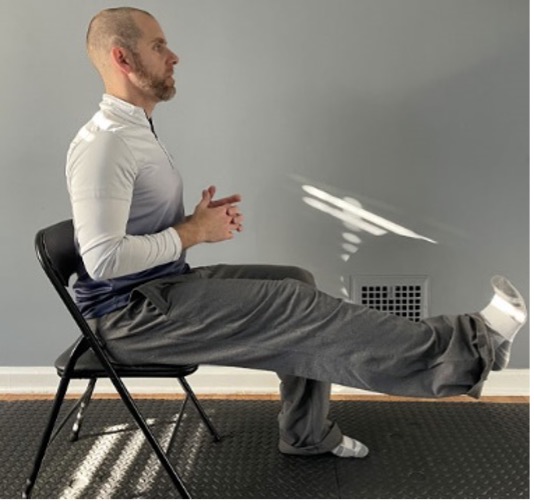
Do you sense the quad? The hip? The knee? What do you sense as you hold this? Now relax the leg back to the floor and rub the quad with both hands until you can sense heat on the upper leg. Do this for about 20-30 seconds then repeat the same test. What is your sensory awareness now? Repeat the same test but hit the center of the quad firmly for 10-15 seconds and then see what you sense. Once again test this multiple times for yourself. Explore the process. You likely are sensing more of the quad and less of the knee/hip the more you do this. This is a simple and easy way to test exactly what systems your brain is actually using, and how this is impacting your hip and knee on a daily basis.
This methodology is how I have taken clients with multiple surgeries and structural issues and helped them to restore full function. How do we know that this expands far beyond placebo?
Because the contractions of the tested/activated systems, without fail, increase and become stronger in a noticeable and objective way. Sometimes the difference in how areas can contract pre session, and post is dramatic.
It can be as dramatic as the client not being able to contract the specific area at all, in contrast to the area being able to be fully contracted and the muscle tone changing from poor, to completely firm. This can occur in as little as 10 minutes at times, depending on the client. Incredibly, many clients have been able to achieve strength and function levels far beyond what they initially had even pre-injury through this process, including athletes at high levels of their sport.
From the above examples we can make the following conclusion: The brain likely sacrifices long term function and efficiency for short term goals, i.e. action, movement and survival. Reason being, primary muscular systems have been deemed too weak and inactive to do the job or action needed. In this way, we can say that the brain lacks the ability to analyze and effectuate the path to perfect self-healing in a manner that eliminates pain. If the brain was concerned about pain and tension, it would not take the path of tensing and flexing less efficient systems, it would simply load the weaker systems that were causing the problematic compensation in the first place. A great example of this is when a client has significant issues of abdominal activation (inability to flex areas of the core or sense the abdominals in positions such as planks). When this is solved with improved sensory awareness of the exact area of the dormant or weak abdominals, the low back pain, or tension they felt directly opposite from this abdominal area, is improved or even completely eliminated. It does not make logical sense for the brain to use weaker and less efficient systems that cause dysfunction, unless we understand that the brain is making decisions based on short term need or survival, or long-term programming. It seems to disregard the outcome of pain, as long as the body can still accomplish the desired movement or action.
More than a healing mechanism, the brain seems to be reliant on compensatory activation of less efficient physical systems, making up for deficiencies as opposed to remedying them. This is where we must get involved in our own healing process. Many tend to think that the answer to solving manifold physical issues is to simply improve strength.
This is the goal of many rehab programs, to target weak areas and improve our ability to resist weight/load in that system. But why doesn’t this always work?
Strength is currently understood as the ability to resist force, and we generally think of people who are very “strong” as those who can move heavy objects or control their own bodyweight effortlessly. However, resisting force, moving objects, or even moving our own body weight does not give us insight into what systems are being utilized at a nervous system level to complete this action. Take the example of the quads (upper thigh muscles) as mentioned earlier. When you rubbed and or hit the quads, you likely sensed “tightening”. You suddenly became aware of their existence. Trying to improve strength in an area of the body without perfecting a high level of communication and sensory experience is simply asking the brain to continue to utilize less efficient systems—likely the very systems responsible for the pain/injury or instability in the first place. Defying logic, there are incredibly strong athletes that continue to suffer from knee, shoulder, hip, and back issues.

Many of these athletes deal with these types of issues chronically, and struggle with specific physical issues or limitations their entire career. While “mind and muscle” connection is discussed in the professional space, being taught how to autonomically engage a specifically targeted underactive primary muscle to create an entirely different permanent neuromuscular pathway via nervous system engagement, is largely unknown at the moment to the general public. After all, if your knee is very sore, the last thing you would assume is that your quadriceps being inactive in this manner could be largely (or wholly!) responsible for the pain you feel.
Even if the issue of inactivity is known (as it is at high levels of sports medicine), signaling this area appropriately at a nervous system level so that the brain can learn how to function through it, can be incredibly difficult and complex. Often, I will need to help reprogram multiple areas of the body, far beyond just the area that is creating the pain and tension in order to create long term stability. The specific physical areas of weakness and disconnection in locations such as the biceps, quads, pecs etc., can be extremely small as well. I have had clients who were able to eliminate ten plus years of sciatic pain, by the activation of an area on their obliques as big as a half dollar. Building improved levels of sensory awareness of our physical body in the attempt to train our nervous systems to re-engage weak and poorly functioning systems is likely the next evolution of training and rehab. I have worked with multiple athletes and nervous system related training is likely the future of top end physical function as well.
Just recently a 15-year-old football player with severe back issues since the age of 8, was able to improve their bench press by 70 lbs. in 4 weeks, simply from rubbing and flexing different inactive areas to improve brain/body connection and communication. He came to me to address chronic back problems. In the process of improving communication at a nervous system level to multiple areas, as an extra benefit, he noticed his added strength, while we addressed his shoulder stability. When we first met, he had zero ability to flex or contract his pecs (pec major) which was severely limiting his expression of strength, and his overall shoulder stability as well.
But what if we simply can’t sense areas of our bodies no matter what we do? Perhaps you attempted to feel your quadriceps earlier when extending the leg and you only ever felt the hip or the knee no matter how much rubbing or signaling you felt you did? Perhaps you even felt anxiety or emotion as you attempted to flex the quad after rubbing/hitting it? This is where the complexity of nervous system states must be understood in order to take the next step. Take a look at how incredibly involved our muscular systems are in regard to fight or flight response, with the image below.
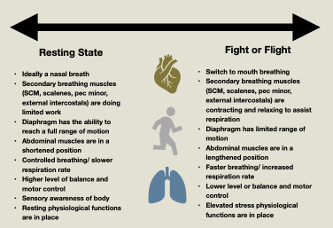
One consistent and concerning traits of those who suffer from nervous system dysfunction (long term fight/flight) is their inability to flex or contract key muscular systems, thereby having a general sensory awareness of various muscular systems all throughout the body. I have never worked with one client with nervous system issues who had strong global communication between brain and body with respect to sensing the quads/glutes/abdominals/rhomboids etc. The pattern is striking and consistent. This inability to communicate between brain and body often leads to these individuals feeling weak and frail. This also seems to tend to have an impact on structural alignment and create extremely negative postural changes over time as well. The phenomenon of physiological disconnect at a nervous system level that indicates a state of dysregulation is extremely common, much more than we likely realize. I recently had a powerful nervous system-related experience myself that is a perfect example of how shifting nervous system states can alter the dialogue between brain and body.
My mother passed a few months ago after many years of battling cancer. I remember getting the call, hearing my father’s tone, and knowing that something was terribly wrong. He told me that he had found her that morning, and that she had passed. I had just talked to her the day before. We had plans to meet for that very day that she passed. I remember feeling stunned, and I laid down in bed and attempted to process the news.
I remember needing to get to the office in an hour. I had to get moving not to be late for an appointment. I hung up the phone and looked at my wife, unable to speak when she asked me what was wrong. I sensed that something was terribly wrong with me, but I could not specifically say what had changed. I laid in bed and simply thought to myself, “I think I need time to process this. Maybe I will cancel all my work for the day”. I had zero desire to go to the office and engage with my clients. I wanted to sleep. My wife looked at me, laying on our bed and asked me if I was getting up. I didn’t respond. I went to tell her what had just happened, and I froze again. I could not speak the words. I could not verbalize that my mother had passed. My wife knew something was off and just sat with me. I knew intrinsically at this point that something powerful had shifted inside of me. My thoughts went to my work and that I needed to assess myself like I would any client. I forced myself out of bed. It was a struggle. I remember that it seemed to take a tremendous amount of determination to even get myself to move.
I got to the floor to test my daily activation routine. The modified plank work to test connection and communication to the abdominals and obliques. The specific push up routine to help activate my weaker rhomboids and pecs, the isometric glute work to help activate my slightly weaker left glute, and finally my quads to test communication and activation of the weaker left thigh. I normally do a few minutes of nervous system signaling during this process, to help to activate the right muscular systems and prevent any type of compensatory activation, so I spent a few minutes doing that. When I went to test my push up, I could not even do one. The more I pushed and forced, the more I felt my shoulder and my neck tense painfully to try to compensate. The positive communication and sensation in my rhomboids and my pectorals that I had rebuilt over the last 10 years were completely absent. My abdominals were silent in my plank work, and I could hardly sense them at all. In my wall sit work I could not sense my quads, and my knees were felt painfully, especially the left one. I noticed myself holding my breath more than normal as well.
I would spend about 20 minutes working through my routine, testing connections and communication, searching for the sensory experience of muscles I had just experienced just the night before.
I could feel a flittering connection to these systems in that 20 minutes, sometimes sensing the right connection and then losing it again. By the time I could finally feel my pecs/chest burn with fatigue, my abdominals tense and lightly cramp, the quads ache, and my glutes activate and fully engage again, I was back to 20+ push-ups with zero pain. My breath also normalized, and I spent a few minutes regulating that as well, focusing on opening up the back side of my rib cage with every breath as I laid on my back. I felt myself start to relax and my thoughts drift, body feeling heavy, my breathing even and deep.
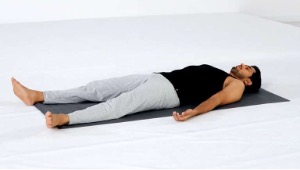
At this exact moment of deeper relaxation, I realized in a flash that I was going to be late to work and raced to shower and get out of the door. All thoughts of abandoning work and canceling were no longer part of my conscious thought process. What’s more, is that I had a powerful desire to go to work again. I love what I do, and it is my passion. And yet in that exact moment when I learned that my mother had passed, that all changed. I just wanted to stop and freeze. I didn’t want to engage or talk to anyone. I wanted to completely shut down.
I would repeat the activation work daily (sometimes multiple times). Each time I would feel overwhelmed by her passing I would find the disconnected physiological areas that had some level of altered sensory awareness and reconnect these systems. The left quad was specifically an area that continued to shut off, and an area that I paid special attention to during this time. A week later I was fully physically functional, pain free, and sensing all systems normally again. I felt the sensation of strength in my body, like I had previous to when she had passed. While I still felt very sad by her passing (my mother and I were extremely close), I was no longer feeling overwhelmed by her death. My sleep, which had suffered greatly for the first few days, returned to normal.
I share this deeply personal story with you because it was a sorrowful and pivotal moment in my life, one where I felt an intense state of disconnection/disassociation for the first time. I was able to utilize some of these methods to see me through this critical time. I believe that many of you have gone through or are going through similar circumstances. I hope that this story resonates with you, and perhaps sheds some light on your own experience. This experience showed me firsthand, that it is incredibly difficult to outthink our nervous system. I could not think myself out of my trauma state, no matter how much I tried to convince myself that I was fine.
Our understanding of physiological systems and how they can be altered by trauma will likely be continuing to change and evolve in the years to come. The brain seems to be constantly changing our ability to communicate and sense muscular systems based on trauma and the state of the nervous system. This is being done without our approval, and without us having awareness of these changes. It happens with physical trauma just as much as it can happen with emotional trauma, and I see evidence of this on a daily basis. Understanding this trauma response, and what the brain is autonomically trying to do to protect us, is essential in the reprogramming process.
Reprogramming out of this trauma response of physiological disconnection and maintaining connection and strong communication to our physical body is likely the future of Somatics and nervous system regulation. The way I responded to personal trauma is the way we humans, and our brain function seems to respond to all traumas.
I have seen this kind of response in every client I have worked with over the past 6 plus years. I have also seen incredible and powerful changes for the positive when sensory awareness is established, and the nervous system is trained to activate systems that can build strength and efficiency. Our physical connection or communication status to our body at a muscular level, seems to indicate the state of our very nervous system itself.
The incredible repeatability of this work across gender and age groups, neurodivergence, various trauma backgrounds, leads me to strongly believe that this is a real science, though not one we can perhaps fully understand yet. As I continue to devote my life to this work, I look forward to an ever-expanding understanding of this phenomenon in hopes to continue to help those in need.
I am currently seeing clients out of Battle Ground, WA as well as online via video across the country and globe. If you are interested in my work, feel free to reach out to me directly. I wish you all the best in your own personal journey of health and well-being.
-A
Nervous system related research on the link between muscle function and trauma
https://www.sciencedirect.com/science/article/abs/pii/S0887899418302716
https://pmc.ncbi.nlm.nih.gov/articles/PMC5998824/
https://www.sciencedaily.com/releases/2024/04/240415163716.htm
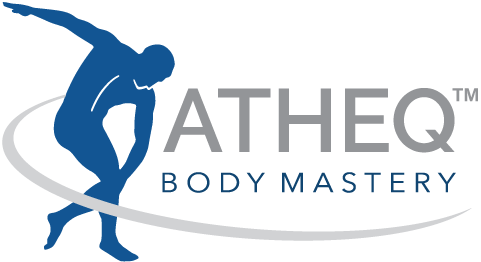
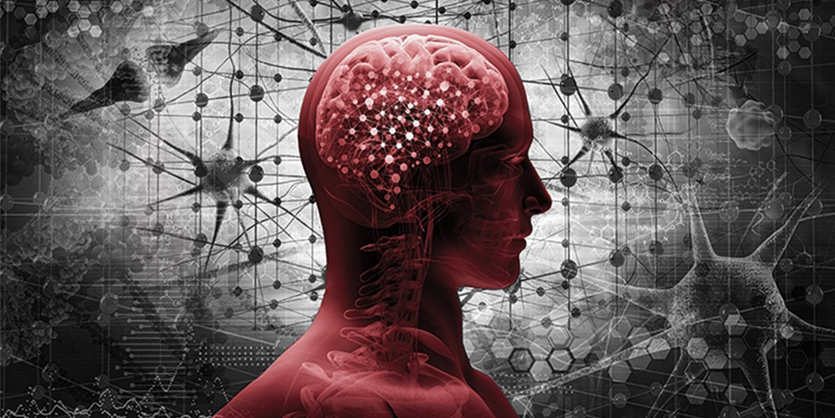
Anton, Well done. I read every word of this beautifully written article. Like an angel you appeared out of thin air after my car accident in ’21 to help me learn how to reconnect my brain, body and nervous system. I will, for the rest of my life sing your praises and practice the skills I learned from you.
One a personal note:
Like you… I might not always be able to trust my body, but I can always trust my brain.
I was in a similar state after the passing of my mother in June, 1996 at age 52. My 31 year old brain/body wanted to shut down, sleep and run far way, all at the same time. None of that was possible bc I had to leave for the 5 hour trip, immediately. I knew none of what I know now about how to help my brain and body stay present. But, I have always trusted my brain to protect me however it sees fit.
One day later, in front of the funeral home where my mother lay, the car I should have been a passenger in according to my sister was Tboned. I too would have been folded in half along with the passenger seat and cooler in the back floorboard. By signaling me to refuse the ride my brain had saved my life.
Excellent article Anton. As someone who has turned to you for help twice, I can attest to the positive impact of your methods. First was helping me with a shoulder injury and most recently with back pain. Thank you for all the work and research you’ve done and for the help you give to others.